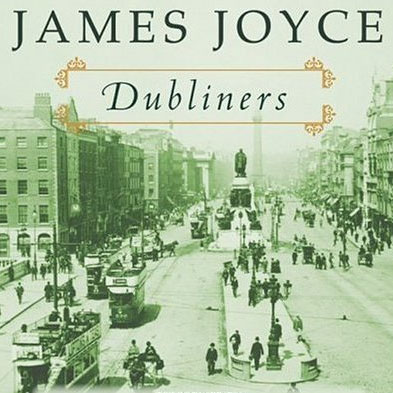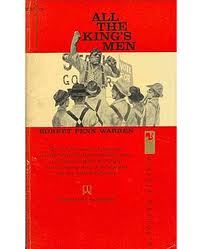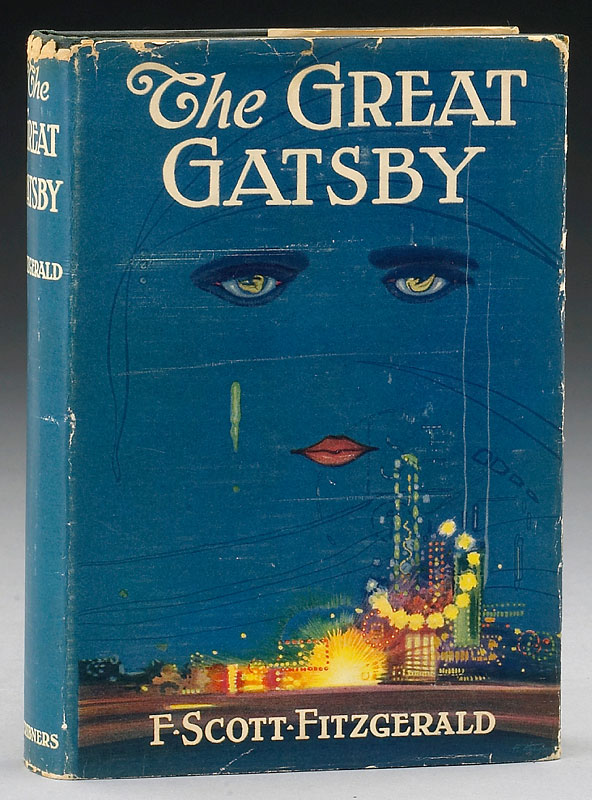Author Photo And Bio
 1. The Sound and the Fury by William Faulkner (1929). A modernist classic of Old South decay, this novel circles the travails of the Compson family from four different narrative perspectives. All are haunted by the figure of Caddy, the only daughter, whom Faulkner described as “a beautiful and tragic little girl.” Surrounding the trials of the family itself are the usual Faulkner suspects: alcoholism, suicide, racism, religion, money, and violence both seen and unseen. In the experimental style of the book, Quentin Compson summarizes the confused honor and tragedy that Faulkner relentlessly evokes: “theres a curse on us its not our fault is it our fault.”
1. The Sound and the Fury by William Faulkner (1929). A modernist classic of Old South decay, this novel circles the travails of the Compson family from four different narrative perspectives. All are haunted by the figure of Caddy, the only daughter, whom Faulkner described as “a beautiful and tragic little girl.” Surrounding the trials of the family itself are the usual Faulkner suspects: alcoholism, suicide, racism, religion, money, and violence both seen and unseen. In the experimental style of the book, Quentin Compson summarizes the confused honor and tragedy that Faulkner relentlessly evokes: “theres a curse on us its not our fault is it our fault.”
 2. Dubliners by James Joyce (1916). Although many of these largely autobiographical stories evoke themes of death, illness, and stasis, nearly all offer their characters redemption —or at least momentary self-knowledge —through what Joyce called “epiphanies,” in which defeat or disappointment is transformed by a sudden, usually life-altering flash of awareness. The collection’s emotional centerpiece is its concluding tale, “The Dead,” which moves from a New Year’s Eve party where guests muse about issues of the day —the Catholic church, Irish nationalism, Freddie Malins’s worrying drunkenness —to a man’s discovery of his wife weeping over a boy who died for love of her. A profound portrait of identity and loneliness, it is Joyce’s most compassionate work.
2. Dubliners by James Joyce (1916). Although many of these largely autobiographical stories evoke themes of death, illness, and stasis, nearly all offer their characters redemption —or at least momentary self-knowledge —through what Joyce called “epiphanies,” in which defeat or disappointment is transformed by a sudden, usually life-altering flash of awareness. The collection’s emotional centerpiece is its concluding tale, “The Dead,” which moves from a New Year’s Eve party where guests muse about issues of the day —the Catholic church, Irish nationalism, Freddie Malins’s worrying drunkenness —to a man’s discovery of his wife weeping over a boy who died for love of her. A profound portrait of identity and loneliness, it is Joyce’s most compassionate work.
 3. For Whom the Bell Tolls by Ernest Hemingway (1940). Hemingway’s ambivalence toward war —its nobility and its pointlessness —are delineated in this account of Robert Jordan, an idealistic American professor who enlists with the antifascist forces in the Spanish Civil War. Jordan’s idealism is quickly tested by the bloody reality of combat and the cynical pragmatism of his comrades.
3. For Whom the Bell Tolls by Ernest Hemingway (1940). Hemingway’s ambivalence toward war —its nobility and its pointlessness —are delineated in this account of Robert Jordan, an idealistic American professor who enlists with the antifascist forces in the Spanish Civil War. Jordan’s idealism is quickly tested by the bloody reality of combat and the cynical pragmatism of his comrades.
 4. All the King’s Men by Robert Penn Warren (1946). In perhaps the most famous American political novel, Warren tracks the unsentimental education of Jack Burden, an upper-class, college-educated lackey to Willie Stark, the populist governor of Louisiana (whom Warren modeled on Huey Long). Burden spirals into self-loathing as he learns how political sausage is made, then finds a moral compass after Stark’s assassination —all told in a bleak poetry that marries Sartre and Tennessee Williams.
4. All the King’s Men by Robert Penn Warren (1946). In perhaps the most famous American political novel, Warren tracks the unsentimental education of Jack Burden, an upper-class, college-educated lackey to Willie Stark, the populist governor of Louisiana (whom Warren modeled on Huey Long). Burden spirals into self-loathing as he learns how political sausage is made, then finds a moral compass after Stark’s assassination —all told in a bleak poetry that marries Sartre and Tennessee Williams.
 5. The stories of Flannery O’Connor (1925–64). Full of violence, mordant comedy, and a fierce Catholic vision that is bent on human salvation at any cost, Flannery O’Connor’s stories are like no others. Bigots, intellectual snobs, shyster preachers, and crazed religious seers —a full cavalcade of what critics came to call “grotesques”—careen through her tales, and O’Connor gleefully displays the moral inadequacy of all of them. Twentieth-century short stories often focus on tiny moments, but O’Connor’s stories, with their unswerving eye for vanity and their profound sense of the sacred, feel immense.
5. The stories of Flannery O’Connor (1925–64). Full of violence, mordant comedy, and a fierce Catholic vision that is bent on human salvation at any cost, Flannery O’Connor’s stories are like no others. Bigots, intellectual snobs, shyster preachers, and crazed religious seers —a full cavalcade of what critics came to call “grotesques”—careen through her tales, and O’Connor gleefully displays the moral inadequacy of all of them. Twentieth-century short stories often focus on tiny moments, but O’Connor’s stories, with their unswerving eye for vanity and their profound sense of the sacred, feel immense.
 6. The stories of Andre Dubus (1936–99). The meditative leanness and working-class focus of Dubus’s stories often garners comparison to Raymond Carver, although Dubus is much more interested in religion (Catholicism) and place (the redneck towns northwest of Boston). His stories are shot through with brutal violence and alcohol, characters whoalternate between sanctity and transgression, and tough moral choices. In Dubus’s fiction, such as the novella We Don’t Live Here Anymore from his 1979 collection Separate Flights, lives change slowly; marriages crumble or move on, bruised and shaken; and his characters survive, to carry on after paying a price.
6. The stories of Andre Dubus (1936–99). The meditative leanness and working-class focus of Dubus’s stories often garners comparison to Raymond Carver, although Dubus is much more interested in religion (Catholicism) and place (the redneck towns northwest of Boston). His stories are shot through with brutal violence and alcohol, characters whoalternate between sanctity and transgression, and tough moral choices. In Dubus’s fiction, such as the novella We Don’t Live Here Anymore from his 1979 collection Separate Flights, lives change slowly; marriages crumble or move on, bruised and shaken; and his characters survive, to carry on after paying a price.
 7. Mildred Pierce by James M. Cain (1941). After shedding her philandering, unemployed husband, Mildred Pierce works menial jobs to support her two children before discovering a gift for making and selling pies in Depression-era California. She’s a strong woman with two fatal flaws —an attraction to weak men and blind devotion to her monstrously selfish daughter Veda. These weaknesses join to form a perfect storm of betrayal and murder in this hard-boiled tale.
7. Mildred Pierce by James M. Cain (1941). After shedding her philandering, unemployed husband, Mildred Pierce works menial jobs to support her two children before discovering a gift for making and selling pies in Depression-era California. She’s a strong woman with two fatal flaws —an attraction to weak men and blind devotion to her monstrously selfish daughter Veda. These weaknesses join to form a perfect storm of betrayal and murder in this hard-boiled tale.
 8. The Big Sky by A. B. Guthrie, Jr. (1947). Set in the 1830s and 1840s this epic tale of adventure captures the American West when it truly was wild, primitive, and free. Its central character is Boone Caudill, a Kentucky mountain man whose desire for virgin earth and clear skies pushes him across rough and glorious landscapes, where he encounters other intrepid searchers, while winning the love of an Indian chief’s daughter.
8. The Big Sky by A. B. Guthrie, Jr. (1947). Set in the 1830s and 1840s this epic tale of adventure captures the American West when it truly was wild, primitive, and free. Its central character is Boone Caudill, a Kentucky mountain man whose desire for virgin earth and clear skies pushes him across rough and glorious landscapes, where he encounters other intrepid searchers, while winning the love of an Indian chief’s daughter.
 9. The Moon and Sixpence by W. Somerset Maugham (1919). Loosely based on the life of Paul Gauguin, this novel portrays a London stockbroker overcome by the need to paint. Abandoning his family, he moves to Paris and then Tahiti, where he lives in poverty and neglects his health, social conventions, and the feelings of others to pursue his obsession. Charles Strickland is selfish, but he is also a genius. And so the novel asks: What price art?
9. The Moon and Sixpence by W. Somerset Maugham (1919). Loosely based on the life of Paul Gauguin, this novel portrays a London stockbroker overcome by the need to paint. Abandoning his family, he moves to Paris and then Tahiti, where he lives in poverty and neglects his health, social conventions, and the feelings of others to pursue his obsession. Charles Strickland is selfish, but he is also a genius. And so the novel asks: What price art?
 10. The Great Gatsby by F. Scott Fitzgerald (1925). Perhaps the most searching fable of the American Dream ever written, this glittering novel of the Jazz Age paints an unforgettable portrait of its day — the flappers, the bootleg gin, the careless, giddy wealth. Self-made millionaire Jay Gatsby, determined to win back the heart of the girl he loved and lost, emerges as an emblem for romantic yearning, and the novel’s narrator, Nick Carroway, brilliantly illuminates the post–World War I end to American innocence.
10. The Great Gatsby by F. Scott Fitzgerald (1925). Perhaps the most searching fable of the American Dream ever written, this glittering novel of the Jazz Age paints an unforgettable portrait of its day — the flappers, the bootleg gin, the careless, giddy wealth. Self-made millionaire Jay Gatsby, determined to win back the heart of the girl he loved and lost, emerges as an emblem for romantic yearning, and the novel’s narrator, Nick Carroway, brilliantly illuminates the post–World War I end to American innocence.